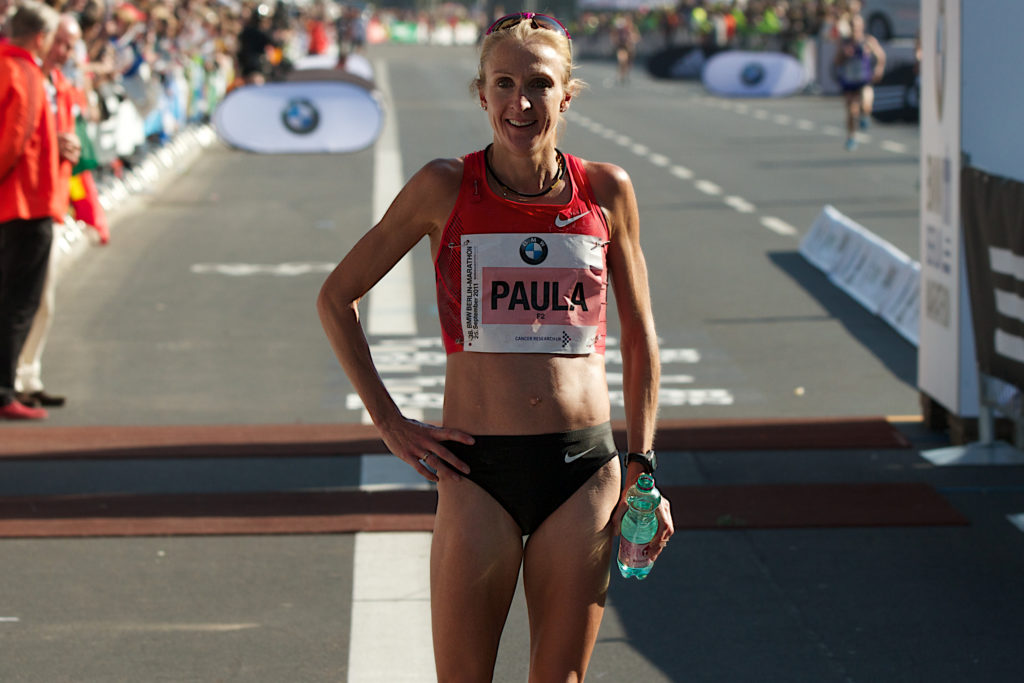Book Review: “My Story So Far” by Paula Radcliffe
One of my post-college roommates described Frank Herbert’s Dune as “brain candy.” “I just eat it up,” she said, making nibbling motions with her hands. Her brain candy is more sophisticated than mine: For sheer get-away-from-it-all delight, I read books about running.
I consumed most of “Paula: My Story So Far” in the chiropractor’s waiting room over the course of several months last year. From early February to mid-March, I was there weekly, trying to get a chronically tight hip to relax. Paula was perfect accompaniment to waiting for treatment of a running injury because much of the book is about Paula Radcliffe being treated for running injuries.
I loved the insight this book gives into the life of a running legend. Paula Radcliffe, a Brit, held the marathon world record, 2:15:25, for 16 years (until October 2019, when Brigid Kosgei of Kenya reset the record in Chicago—I got a glimpse of her during that performance!) Radcliffe also set world and European bests in 5 kilometers and 10 miles on the road and won European and world championships on road, track and cross country. Before I bog this book review with statistics, I will pause to put her titles in perspective.
Paula, in the book, sweated her performances in the 10,000 meters on the track that edged down to 30 minutes—for six-point-two miles! As I read this book, I was trying to run 48 minutes for the same distance. Comparisons inevitably make me feel old, dumpy and slow—but it’s fun to think of a body that will carry someone that far that fast. A running machine.

Like a machine, the daily concerns of a professional runner are: body, body, body. Every day spent building up, fine-tuning and checking in on her body. Anything could be a potential hazard: a hotel room service trolley; a two-hour drive; a pine cone on the trail.
“He [a doctor] got out the scans and looked at them. I watched his face and the look of horror that came over it,” she writes about a pre-Olympic marathon injury treatment. For nearly anyone else, a swelling under a muscle would be a painful annoyance. For Paula, it endangered one of the most important performances of her career.
Of course, the mind is attached to the body. Paula’s is exceptionally up-beat, optimistic, and competitive. A world champion clearly must have a will to win in addition to a body capable of running that fast. Refreshingly, there are moments in the book depicting times, such as the 2004 Olympic marathon, when her body simply would not do what her mind wanted it to. There are limits.
This book—as any autobiography—takes you deep inside the head of one person. In this case, you warm up for then run world class track meets and go into the VIP tent at major marathons and go into the psyche of an elite athlete in moments of victory and defeat. You forget, temporarily biased, that one woman’s loss is another woman’s win; the night I finished “Paula” I watched footage of the end of the Athens 2004 Olympic marathon. Deena Kastor’s climb from 16th to a bronze medal in the last miles of the race, made possible in part because Paula dropped out, is inspiring. (I think I’ll read Deena’s book next.)
Overall, Paula’s account of her life up until 2005 simply makes me want to go out and run more. Running was Paula’s life and livelihood (she retired in 2011) but it was also her way of meeting the world.
“As an athlete, even when a rational person might see grounds for doubting, the racer in my always believes,” she wrote.
And, about a run after a great disappointment: “Out in the woods, where I have trained so often in the past, I let my mind relax. Thoughts came and went and I found perspective; things made more sense. I felt happier and more in control. That is what running has always done for me: put things into perspective.”
Same here.
Oh, and there are pictures.